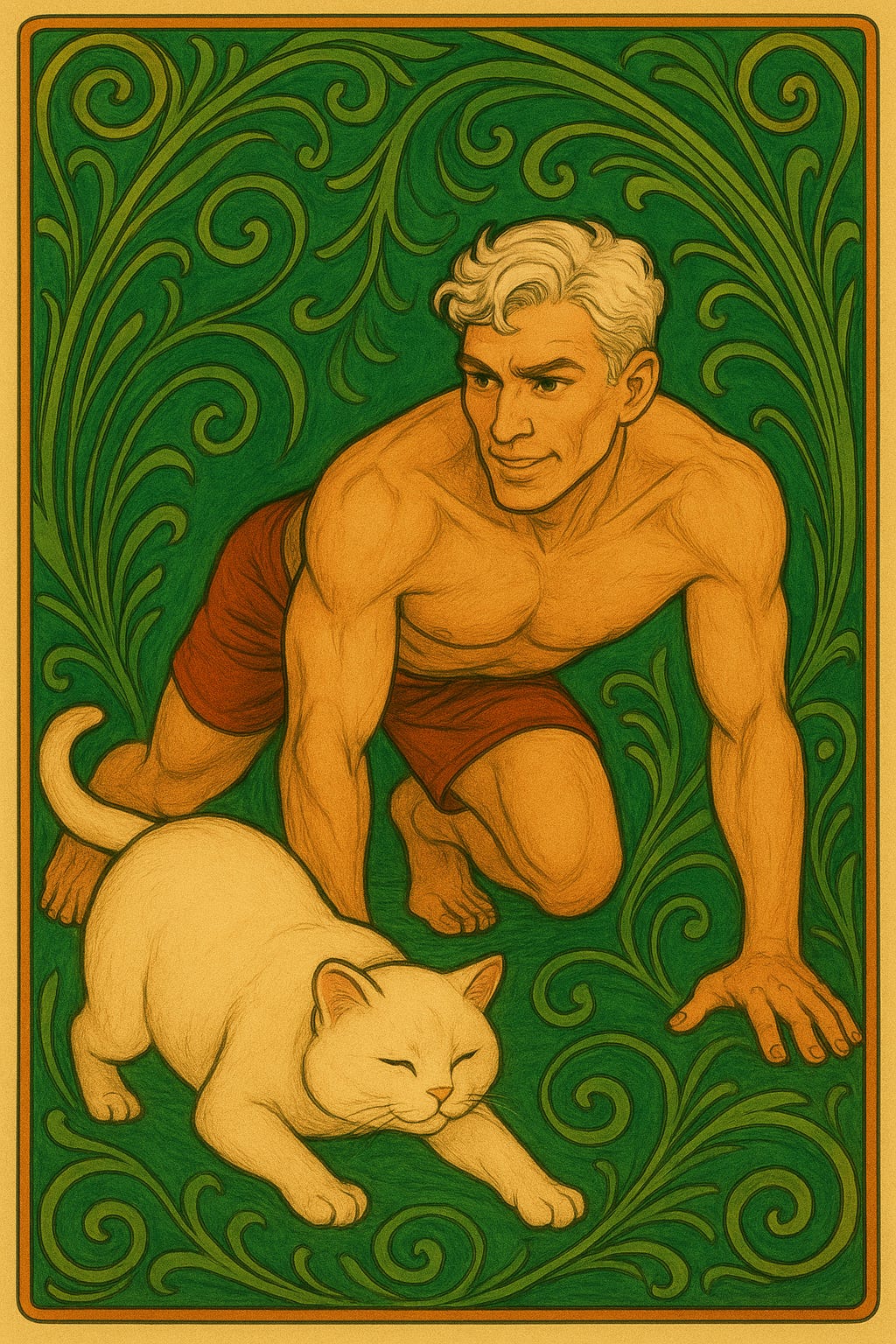“Collectively, we’ve suffered a massive stroke: our ancestors’ art of movement has been wiped out by chairs, cars, and keyboards. The generational transmission of posture, gait, and breath went silent. It’s time we relearned the language our bodies were born to speak.”
I recently had a conversation on my channel where someone argued, quite logically, that natural movements like running (or professor Tanaka’s slow jogging, which we were talking about) shouldn’t require too much instruction.
My counterpoint was that this isn’t quite true. Everything that feels natural is learned. We had to learn how to stand, how to walk. And when someone suffers a stroke, they often have to relearn these “natural” skills from scratch, usually with the help of a physiotherapist.
That exchange got me thinking more broadly about the state of fitness, health, and movement in our society today.
Here’s how I see it: as a culture, we’ve suffered a massive stroke. We’ve forgotten the simple skills that once kept our bodies strong, flexible, and resilient.
For over a century our lives have been reshaped by chairs, cars, and keyboards. We sit to work, sit to eat, sit to entertain ourselves—and then wonder why our backs ache and our knees creak. This new, artificial environment has left us limp, cut off from the mechanics our ancestors mastered and passed down.
Take something as basic as pooping. Even that got modernized. We sit on a porcelain throne, strain, and wonder why blood vessels pop and most of us can’t squat easily. Meanwhile, everyday wisdom about posture—how to stand, walk, sit, even sleep—was bulldozed by slouching desk jobs and endless commutes. We copied French couture’s slump, then outsourced our body’s intelligence to foam cushions, massage chairs, and ergonomic gadgets. Most of these “solutions” did nothing; some made the problems worse.
The fallout? Obesity, Type 2 diabetes, and kids growing up with the same problems as their parents. We chase quick fixes: detox teas, posture gimmicks, fancy wearables. Five minutes later we slump the same way.
Every so often someone returns from the wilderness (or the developing world) claiming to have rediscovered the secret of posture. They write a book, sell a course, maybe even market a chair. I don’t buy their fanciful stories or chairs, but I do agree: posture matters.
The truth is, everyone needs just a bit of movement and common sense, and sometimes yes, a little bit of instruction.
What can get everyone healthy and moving again with the minimum effort. The knowledge is there, it just needs to be dusted off. Every now and then a “prophet” pops up in fitness, someone who, through intuition, experimentation, and luck, seems to have cracked a big piece of the puzzle.
In the 1950s the Royal Canadian Air Force had Bill Orban with his 5BX program for Arctic airmen. The US Marines had Colonel Rankin with isometrics. One of my YouTube viewers told me about Clarence Bass, who promoted an approach similar to mine: mostly easy exercise, with short bursts of effort.
This time it’s not just intuition. It’s intuition backed by science. You don’t need to spend your life on the hamster wheel of fitness. In fact, you shouldn’t.
Here are some of the “forgotten finds” (which I won’t go into details here as I cover them on my channel and in more detail with BMC members):
Isometrics: strength in stillness (both yielding and overcoming).
Explosive “sprints”: any all out activity in 20-second bursts that awaken your power and stimulate new mitochondria.
Flexibility: the safeguard that lets you deploy strength safely.
All of this works best in bite-sized pieces, guided by the DSY - Don’t Strain Yourself. Instead of drawn-out gym sessions, aim for a few minutes of focused movement. If you feel good, do another short session. Sprinkle in three minutes of Radio Taiso stretches, a slow 10–20 minute jog, a few isometrics like plank or horse stance, and Asian squats. Treat them as “movement bites” throughout your day: post-meal walks to tame insulin spikes, a quick stretch before bed, a reboot when afternoon lethargy hits.
Here’s the glorious truth: if you’re not training for a decathlon, who cares about pace charts or heart-rate zones? The point is to feel alive in your body. The point is to live younger.
We’ve all inherited this modern limbo—a collective “massive stroke” that left us helpless in our own bodies. But the skills are still there, waiting to be rediscovered.
Move, and a better quality of life awaits you.




Your best email yet. You absolutely nailed the issue as well as the only effective response. Sitting is killing us. Movement is the answer. Moderate exercise and eating like our hominid ancestors are the icing on the cake. Time for everyone to get busy! Our goal should the elimination of type 2 diabetes and hypertension in our generation. It is not beyond the question. The science and data are unequivocal.